I got myself a 2005 edition of the
Garmin eTrex GPS receiver a week ago (available at Sim Lim Square and Sim Lim Tower for less than S$200). This is like a high frequency radio receiver (tuned to a frequency of 1575.72 MHz) detecting signals sent by 29 satellites hovering overhead at an altitude of 20,200 km. If you are able to get the signal from four satellites, the GPS unit can tell you where you are, anywhere on Earth, with an accuracy of less than 15m. It's pretty remarkable.
My first encounter with a Garmin GPS was in a computer
game simulation. The GPS wasn't simulated in its entirety, but it was good enough to illustrate how the thing works and its usefulness in navigation.
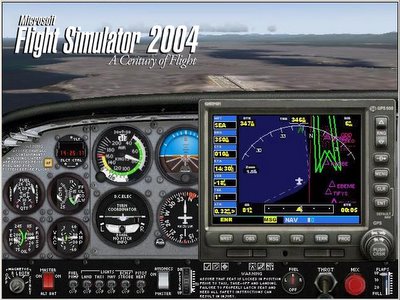
A basic GPS handheld with no mapping functionality, the 'yellow' eTrex is a
solid product. Here's a picture I took on 11 Feb, 2006 at 9:17 (GMT 01:17).

Here's a wonderful GPS tracking software called... uh...
GPS. It shows the movement of the various satellites at any date and time. You can see that the satellite numbers correspond with that seen in real life!
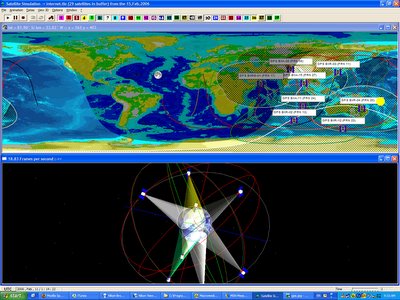
I wanted to install the orbital information of the GPS satellite constellation in the
Celestia space simulator, but there wasn't any on the Motherload, so I decided to make an addon myself. You can now download it
here.
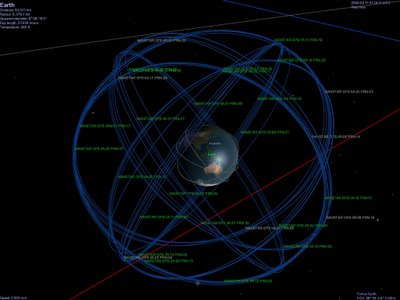
No. 27 satellite (model not mine) beaming information to me.

So essentially, the receiver is a navigation device. You can set a waypoint, and return to that point easily. As long as the sky isn't obstructed by buildings or lots of trees, you won't get lost. It can also be used for tracking running routes; Garmin has a few models of these sorts of GPS 'watches' like the
Forerunner 205. Anyway, last night I went jogging , and here's my route.
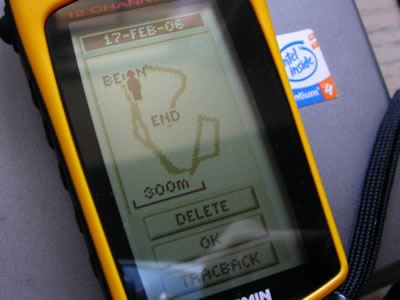
Nice stuff! And to think it was initially designed (and is still used) for the military in the 1970s. The 1983 horrific
downing of Korean Air Flight 007 by Soviet fighters prompted President Reagan to open up the technology (costing US taxpayers
USD 15 billion by last count) to civilian users worldwide, free of charge.
Here's a cute animation of the startup screen, courtesy of the
US Patent Office.
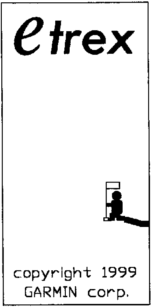
 A basic GPS handheld with no mapping functionality, the 'yellow' eTrex is a solid product. Here's a picture I took on 11 Feb, 2006 at 9:17 (GMT 01:17).
A basic GPS handheld with no mapping functionality, the 'yellow' eTrex is a solid product. Here's a picture I took on 11 Feb, 2006 at 9:17 (GMT 01:17).
 Here's a wonderful GPS tracking software called... uh... GPS. It shows the movement of the various satellites at any date and time. You can see that the satellite numbers correspond with that seen in real life!
Here's a wonderful GPS tracking software called... uh... GPS. It shows the movement of the various satellites at any date and time. You can see that the satellite numbers correspond with that seen in real life!
 I wanted to install the orbital information of the GPS satellite constellation in the Celestia space simulator, but there wasn't any on the Motherload, so I decided to make an addon myself. You can now download it here.
I wanted to install the orbital information of the GPS satellite constellation in the Celestia space simulator, but there wasn't any on the Motherload, so I decided to make an addon myself. You can now download it here.
 No. 27 satellite (model not mine) beaming information to me.
No. 27 satellite (model not mine) beaming information to me. So essentially, the receiver is a navigation device. You can set a waypoint, and return to that point easily. As long as the sky isn't obstructed by buildings or lots of trees, you won't get lost. It can also be used for tracking running routes; Garmin has a few models of these sorts of GPS 'watches' like the Forerunner 205. Anyway, last night I went jogging , and here's my route.
So essentially, the receiver is a navigation device. You can set a waypoint, and return to that point easily. As long as the sky isn't obstructed by buildings or lots of trees, you won't get lost. It can also be used for tracking running routes; Garmin has a few models of these sorts of GPS 'watches' like the Forerunner 205. Anyway, last night I went jogging , and here's my route.
 Nice stuff! And to think it was initially designed (and is still used) for the military in the 1970s. The 1983 horrific downing of Korean Air Flight 007 by Soviet fighters prompted President Reagan to open up the technology (costing US taxpayers USD 15 billion by last count) to civilian users worldwide, free of charge.
Here's a cute animation of the startup screen, courtesy of the US Patent Office.
Nice stuff! And to think it was initially designed (and is still used) for the military in the 1970s. The 1983 horrific downing of Korean Air Flight 007 by Soviet fighters prompted President Reagan to open up the technology (costing US taxpayers USD 15 billion by last count) to civilian users worldwide, free of charge.
Here's a cute animation of the startup screen, courtesy of the US Patent Office.
